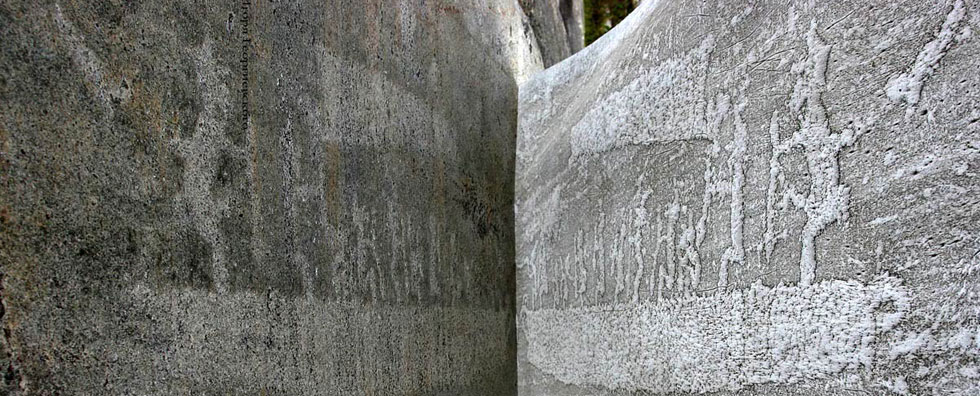
Issue №2, Vol. 9
Katarov V., Syunev V., Ratkova E., Gerasimov Y. Impact of wood forwarding on forest soils // Resources and Technology. 2012. №2, Vol. 9. P. 73‒81.
DOI: 10.15393/j2.art.2012.1641
Impact of wood forwarding on forest soils
| Katarov V K | Petrozavodsk State University, vkatarov@petrsu.ru |
| Syunev V S | Petrozavodsk State University, siounev@petrsu.ru |
| Ratkova E I | Petrozavodsk State University, dev@psu.karelia.ru |
| Gerasimov Y Y | Finnish Forest Research Institute, yuri.gerasimov@metla.fi |
|
Key words: cut-to-length method; forest soils; rut depth; bulk density; slash; bogie track |
Summary: Mechanised CTL harvesting in thinning, clear felling, and extraction are potentially damaging harvesting sites,
as operations are conducted under all weather conditions involving predominantly heavy machinery. Extreme machine sinkage has a direct influence on productivity, fuel consumption, and the cos
t of harvesting operations, leads to site disturbance and soil damage.
This is especially true in areas with soft soils in spring and autumn, where options are used to improve the operational capability of the existing CTL system, such as “bogie tracks”
an d “slash reinforcement”.
Regarding soil compaction, the CTL system met the ecological requirements for its use on common forest soils in northwest Russia within the bounds of this experimental design.
However, an increase in bulk density was found in all treatments at the silt loam soil surface (0 to 5 cm depth). The magnitude
of the increase was a function of the number of passes, slash/track presence, and moisture content. In comparison
with conventional wheel treatments, bogie track treatments showed that the compaction of wet and moist siltloam held irregularly. The formation of a compacted zone under the traction element, helped by the
reinforcement of forest soil roots, took place in the first phase. With an increasing number of passes, the compacted zone deepened and partly collapsed, and there was a lateral bulging of the soil. Then, there was a
slight increase in density because of the formation of secondary hardened zones. The results for slash reinforcement treatments indicated that a layer of slash mitigated the effect of a single forwarder pass and
subsequent passes. The bulk density did not change considerably. The increased bulk density for the forest soils was nearly 10% of that of the slash - covered soils.
In addition, the presence of the combination of “slash + track” made no apparent difference within the bounds of the experimental design. Regarding sinkage, the CTL system with a conventional wheel did not meet the ecological requirements for thinning (rut depth should be less than 0.15 m).
Moreover, rut depth reached the forwarder clearance of the machine (0.67 m) on wet soil. The results of bogie track treatments showed that rut depth did not meet the ecological requirements for thinning (0.15 m),
particularly on wet soil, but was within the forwarder clearance of the machine.
In the slash treatments, rut depth changed only slightly.
All mechanised harvesting systems applied in Russia cause different kinds of negative environmental impacts.
When applied on sandy or sandy loam soils, all mechanised systems demonstrated almost the same impacts on the soil. However, the proportion of sandy soils is small in Russian forests in
comparison with loams and clays. On loams and clays, the TL and FT systems, unlike the CTL system, resulted in significant soil compaction, but at the same time formed almost no track. Over 50% of the harvesting sites in Russia are on wet and soft soil. Therefore, the application of the CTL system has to be improved in order to reduce rut formation in most common soils. Hence, the associated CTL machine ground contact devices and slash layer must be suitably adapted for specific harvesting sites, based on terrain classification criteria. |
Displays: 2628; Downloads: 1233;



